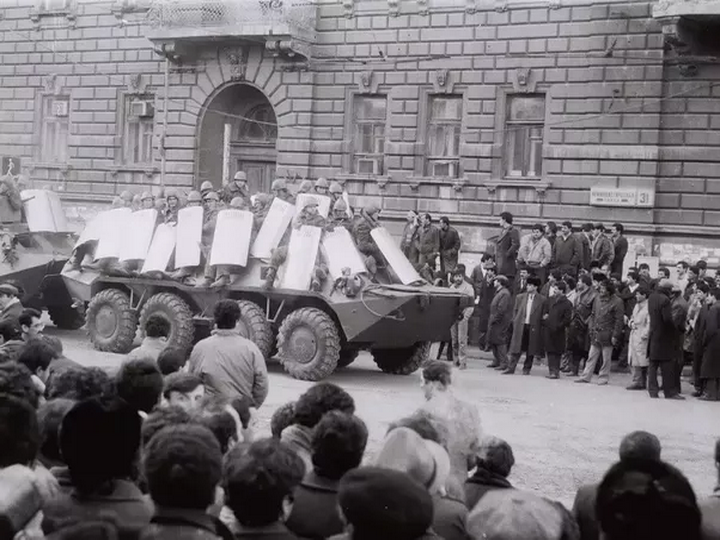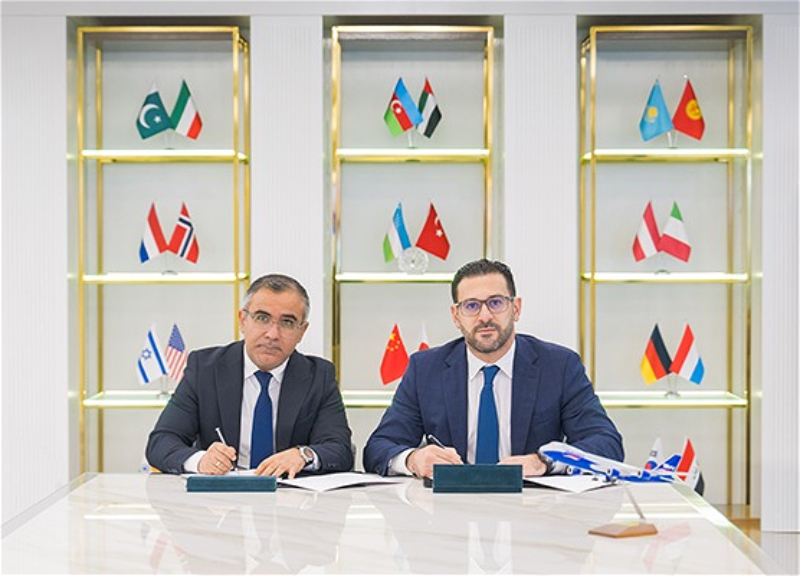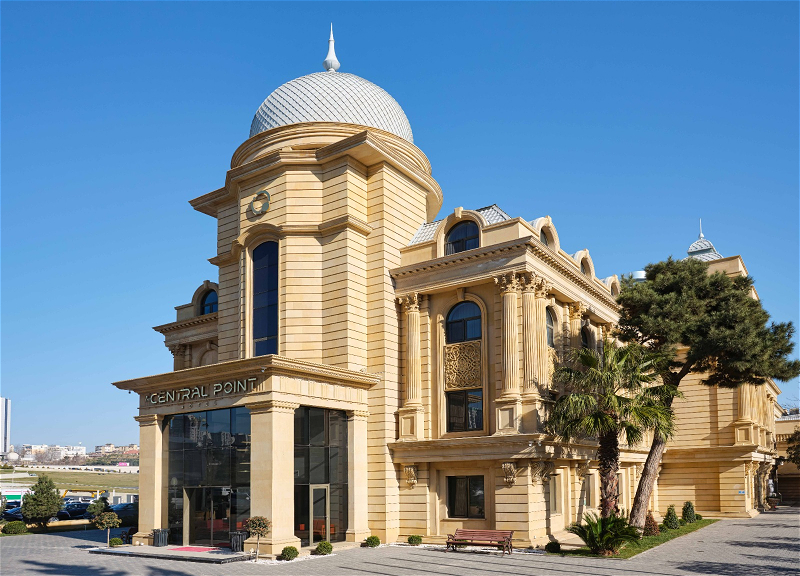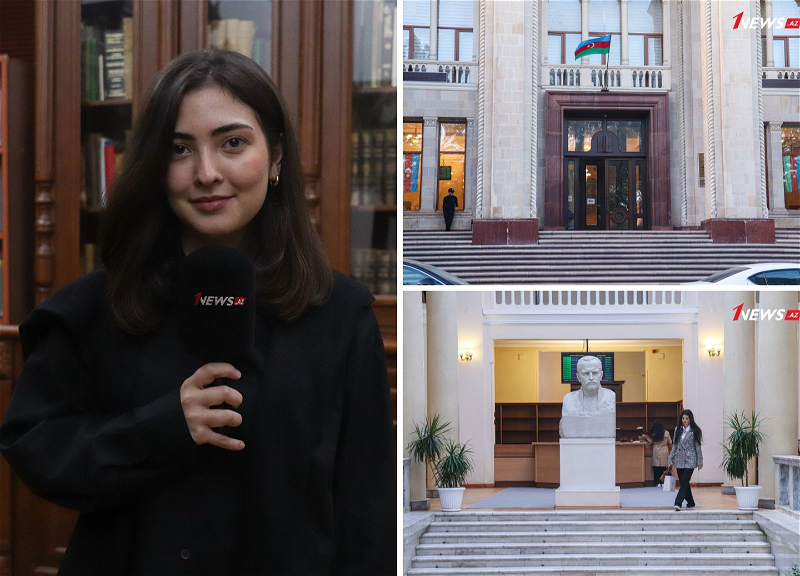Sumgait Events as the First Signal of the Dissolution of the Soviet Union

The disintegration process of the Soviets Union, which started triggering the domestic security of the country reached its peak point in the South Caucasus countries in the end of 1980s.
The endless political provocations around the Nagorno-Karabakh Autonomous Oblast flamed the tensions between ethnic Armenians and Azerbaijanis and sank the region into years of bloody violence that claimed 30.000 lives.
But before that the region has witnessed a significant escalation of nationalistic rhetoric, which added fuel to the destabilization of situation. The growing nationalism that stretched from Armenia towards ethnic Azerbaijanis in the country and Nagorno-Karabakh region sparked an immense outrage in Azerbaijan.
Being frustrated by the negligent attitude of the Soviet government towards ethnic cleansing in Armenia and growing separatist efforts in Nagorno-Karabakh region, people in Azerbaijan flooded streets to join the massive rallies in order to voice loudly against this policy.
In this regard, tragic repercussions of this period occurred in Sumgait in February of 1988. Although, 30 years had passed since the Sumgait riot that officially claimed 32 lives, 26 of which were Armenians and 6 Azerbaijanis, certain external sources still claim that it was an ethnic cleansing attempt of ethnic Armenians in Azerbaijan.
Notwithstanding the fact, the Sumgait events became one of the earliest signals of the disintegration process of the Soviet Union. In fact, prior to mass riots in Soviet Azerbaijan the population of the country was more multinational, including ethnic Armenians, Georgians, Russians, Jewish, and other Caucasian nations compared to neighboring Armenia.
Therefore the Armenian allegations regarding the ethnic discrimination in Azerbaijan sound unrealistic, if not absurd. In Sumgait, which is located about 30 km. away from Baku, was a multinational city since local population made up of fifteen different nationalities. The number of overall ethnic Armenian population in Sumgait after the so-called “pogrom” were 4608, and 209.144 Azerbaijanis according to the statistics of the USSR.
No any ethnic tensions were recorded in Sumgait until February 1988. On 26th of February, the central square of Sumgait was captured by protestors who objected to the killing of 2 Azerbaijanis who had been shot during the clashes between Armenians and Azerbaijanis in the Nagorno-Karabakh region in 1988.
Later as it was revealed during the investigation process the agent-provocateurs of the former KGB appeared among the speakers of the rally under the guise of Azerbaijani refugees deported from the Armenian town of Kafan. According to the statements of Armenia, the so-called “Sumgait pogroms” was an attempt of Azerbaijan to frighten ethnic Armenians, and to abstain them from the idea of separation of Nagorno-Karabakh from the latter.
Thereby, they claim that the real number of victims in Sumgait was above 400. While the number of victims was explicitly exaggerated, the above-mentioned sources prefer to turn eye blind to additional historical facts that saved many lives of hundreds ethnic Armenians in Baku. When the unrest occurred in Sumgait, the local Communist organization board, immediately secured Armenian quarters of Baku by issuing an official decree.
Dozens of Azeri volunteers were guarding those quarters in order to prevent further escalation of the violence. The assessments and analysis of numerous official documents, investigative records, testimonies and primary sources confirm that the Sumgait unrest was a well-organized provocation against Azerbaijan, which was implemented with high professionalism by the Armenian nationalists led by Eduard Grigorian and the Soviet State Security Committee (KGB).
There are different definitions of Sumgait events in our days such as why the former KGB was interested in flaming up tensions in Sumgait? By organizing the Sumgait events, KGB aimed to prevent the growing of opposition centers inside of Azerbaijan SSR that began to be very popular since 1987.
Moreover, the separatist motivations, and aggressive policy of Armenia in Nagorno-Karabakh region, in particular illegal Constitutional Act of the Supreme Council of Armenian SSR (1989, 1990) regarding the annexation of the region needed a further justification in the society and thereby Sumgait became an ideal case. It is noteworthy that the Karabakh conflict and Sumgait events are interrelated.
Obviously, the ethnic-based provocative actions under the auspices of the former KGB in the end of 1980s was something common. The similar unrest and provocations were carried out by the KGB in Osh (Kyrgyzstan), Fergana (Uzbekistan), Tbilisi (Georgia), Vilnius (Lithuania) and other peripheral parts of the Soviet Union. According to A. Yakovlev, a member of the Politburo and Secretariat of the Central Committee of the USSR Communist Party, "The special services themselves provoked the unrest and conflicts to prove their necessity.
So it was the case in Alma-Ata, Fergana, Sumgait, Vilnius, and Riga". Consequently, the Sumgait events presaged the bloody war imposed by Armenia against Azerbaijan with subsequent occupation of Azerbaijani territories.
By the Sumgait provocation the Armenian nationalists succeeded in achieving their ultimate aim - to discredit Azerbaijan in front of the world community and to separate the Nagorno-Karabakh region from Azerbaijan.
Fuad Shahbazov is young researcher and political reviewer from Azerbaijan. His main research fields are history, and foreign policy issues.














